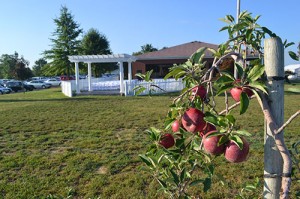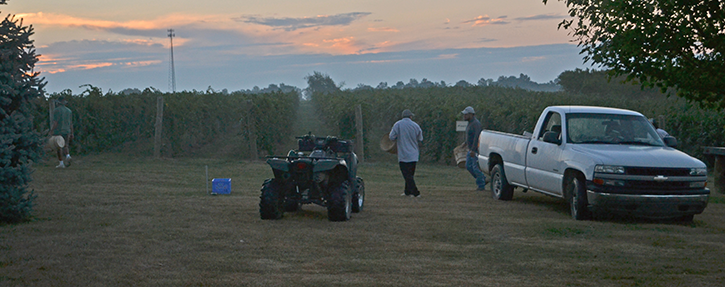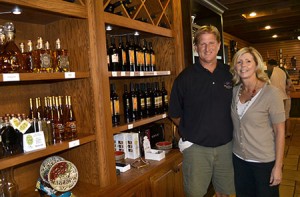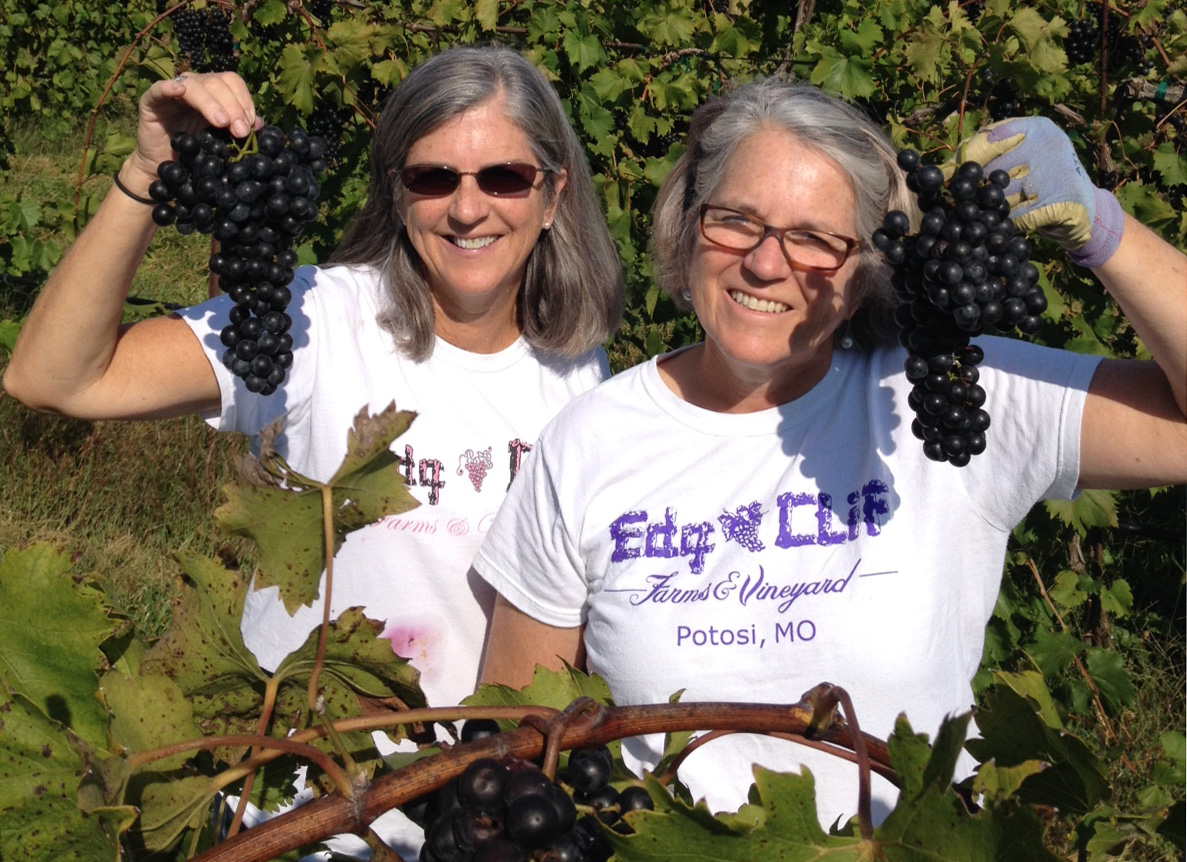Indiana’s Huber Winery: Seven Generations and 600 Acres
Publisher’s note: This is the first of a two-part series on Huber Orchard and Winery, a sixth generation, family owned winery in Southern Indiana. Part one focuses on the wineries diversified business model. The second installment will examine Huber’s grape growing and wine making operation.
Few, if any, wineries have carried diversification as far as the Huber family in south central Indiana. A Wall Streeter would readily recognize Huber Orchard and Winery as a conglomerate–an enterprise of multiple business activities.
‘We’re told you won’t find this even in California,” says co-owner Ted Huber. Huber Orchard and Winery had 580,000 visitors last year, and as many at 10,000 on busy weekend days, according to Dana Huber, Ted’s spouse. The enterprise has about 25 full-time employees and more than 150 during the peak seasons.
To begin there’s a large, open-ceiling tasting loft above the winery cafe. Beyond the cafe patio is Plantation Hall, a complex of meeting rooms with banquet room large enough to seat more than 900. It’s the largest such facility in the Louisville area outside the city itself. And beyond Plantation Hall is an outdoor area devoted to wedding ceremonies. Huber hosted 85 weddings last year.
Across the parking lot from the cafe is the farm market, stocked with Huber produce. Between market and winery is the ice cream shop where the Huber’s sell their homemade ice cream and inside the market is a bakery where they offer a variety of breads and other goodies baked on site.


Squeezed between the market and ice cream shop is the departure spot for U-Pick trains — tractor-drawn wagons that ferry U-Pick customers to and from the orchards, vegetable gardens and vineyards. U-Pick is a major business. Huber has two acres of seedless grapes and 1.5 acres of concord especially for U-Pick customers.
A comparatively recent addition to the Huber enterprise is a still. The Starlight Distillery released its first brandy eight years ago.
The Huber’s have 60 acres of vineyards (depending on who’s counting) producing about 400,000 pounds of grapes a year for wine making. They presently grow 21 varieties plus a few new ones they won’t talk about until tested. It is the state’s largest estate winery and one of the largest in total output. It produced about 55,000 cases of wine last year.
The rest of the farm is devoted to growing 14 varieties of apples, 15 varieties of peaches, nectarines blackberries, blueberries, red and black raspberries, more than a dozen vegetables, strawberries, pumpkins and Christmas trees
Huber Orchard and Winery is now owned by sixth generation Hubers — cousins Ted and Greg. Ted handles wine operations and Greg the farming side of the enterprise. Ted’s wife, Dana, does marketing and Greg’s wife, Jan, is chief financial officer.
Greg and Jan’s son, AJ, an Indiana University business school graduate, was the first of the family’s seventh generation to join the enterprise full-time. His sister, Marcella Huber-Hawk, is a chemical engineer grad from Rose-Hulman Institute of Technology in Terre Haute who worked elsewhere for a while. She has since returned to assist her mother in the office.
‘I love it here,” Marcella said. ‘It’s my home.”
AJ and Marcella have a sister who is a senior in resort and hospitality management who may or may not join the business after graduation.


Ted and Dana’s teenage sons are already helping out when not in high school or playing soccer.
And AJ has a five-month-old daughter who he is already referring to as the first of the family’s eighth generation.
Ted says the business has been successfully diversified due to the long family history. The farm was established in 1843 by Simon Huber, who arrived in America with years of experience growing fruit and making wine. During the ensuing 169 years the Hubers could take their time with diversification, Ted says.
The diversification process, however, picked up about 1970. The U-Pick business was growing and the Hubers started producing additional crops including strawberries (early crop), pumpkins (fall) and Christmas trees (late year).
When the state adopted legislation that legalized wineries and made such businesses economically feasible the Hubers launched a commercial winery, began making strawberry wine (because they already had the berries) converted the long-idle dairy barn to wine production, and started planting vineyards. Scion descendant Simon’s mostly vinifera grapes from Europe vanished decades earlier, wiped out by the phylloxera blight of the latter 1800s, Ted explains.
In the next installment, we’ll look at the 11 vinifera and hybrid varieties that are grown and used in wine production at Huber Winery.
See Related Story: Andrea Robinson Speaks at Huber Winery
[wp_geo_map]






We had a fabulous time today. We ended up buying 17 bottles of wine. What an amazing establishment! Scott was our tasting tender and he is extremely helpful & knowledgable!! Very friendly and a true champion to your business!! Thanks to Scott from Scott, Jaime & Eva Estes…